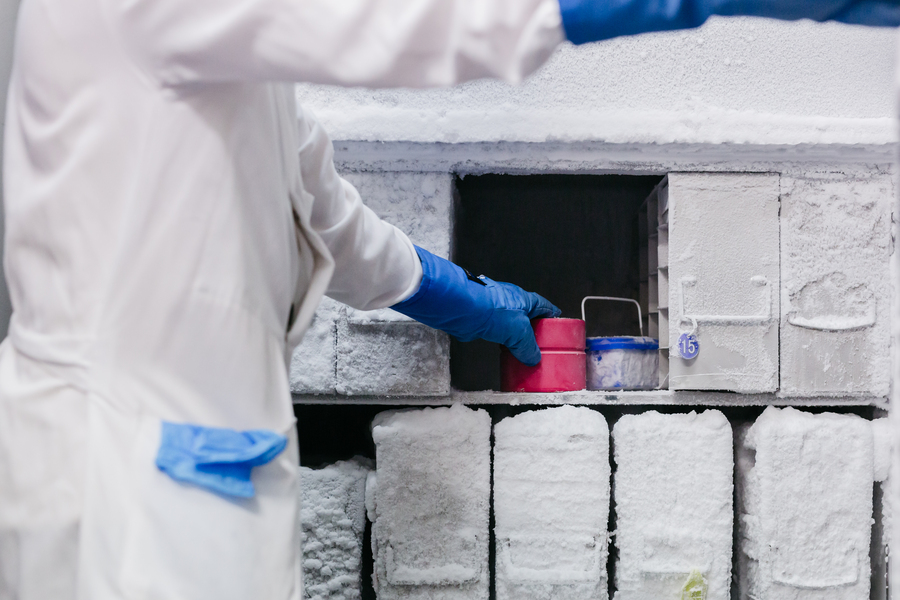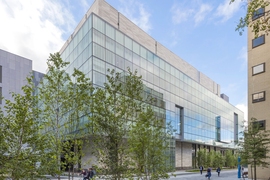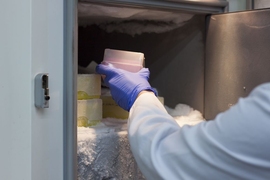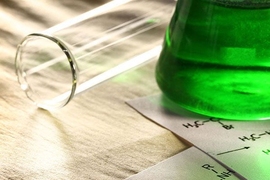In its fourth year, the International Institute for Sustainable Laboratories (I2SL) International Laboratory Freezer Challenge drew 218 laboratory participants from around the world, from 88 research institutions. Three MIT laboratories participated in the challenge: the Department of Biology’s Barbara Imperiali Lab, Department of Biological Engineering’s Jacquin Niles Lab, and Department of Biology/Whitehead Institute for Biomedical Research’s David Sabatini Lab. MIT and the Whitehead Institute together received the Top Academic Organization Award. The Niles lab and the Imperiali lab are MIT Environment, Health & Safety (EHS) Green Lab Certified.
The Freezer Challenge, which is run by the nonprofit organizations My Green Labs and I2SL, is aimed at promoting efficient, effective sample storage for laboratories around the world, and using a spirit of friendly competition to increase sample accessibility, sample integrity, reduced costs, and energy efficiency.
Over a five-month period, challenge contestants implement optimal cold storage management practices, such as defrosting and removing dust from freezer intake or coils, regular cleanouts, organization of inventory on file, and high-density storage. Winners are then chosen based on the amount of energy saved. Additionally, in the spirit of friendly competition and collaboration that pervades the challenge, contestants can earn points for sharing tips about their own cold storage best practices.
This year, the 218 laboratory participants saved an estimated total of 3.2 million kilowatt-hours (kWh) per year, up from 2.4 million in 2019. The savings represents the equivalent of reducing carbon emissions by 2,260 metric tons per year, or removing 360 passenger vehicles from the road for a year. According to Christina Greever, operations manager at My Green Labs, the three participating MIT and Whitehead Institute labs saved an estimated 520 kWh/year.
Two of the three labs — Niles and Imperiali — have previously participated in MIT EHS’ Green Labs Freezer Challenge, and have consequently instituted good management practices surrounding cold storage. The Sabatini lab hasn’t previously participated in EHS’ challenge, but had also already implemented many of the practices the challenge encourages and rewards.
Edith Valeri, of the Sabatini lab, said that while her lab didn’t face any major difficulties, the challenge encouraged lab management staff to be “more aware of freezer usage” and “more mindful of wattage usage, turning down temperatures to a sustainable level, and defrosting the freezers.”
Similarly, both Sebastian Smick, a technical associate in the Niles lab, and Christine Arbour, an NIH postdoc in the Imperiali lab, found that participating in the challenge was not disruptive to operations, and the only difficulties they ran into came as a result of the Covid response. Because of their previous participation in the MIT EHS’ Green Labs Freezer Challenge, efficient energy usage is already routine for the three labs.
Smick described the challenge as “a good incentive” for the Niles lab to practice regular thawing, and “a nice way to quantify what it means to the University’s power consumption.” He credits MIT Custodial Services for the invaluable support they provide on a regular basis. “Custodial Services is always there for us during our thaws to provide mopping and absorbent barriers while we thaw. Most of the ice is captured as a solid, but spillover is unavoidable. They’ve saved us thousands of paper towels!”
The Imperiali lab upgraded its cold storage in March, replacing its minus-80 degrees Celsius freezer with a newer, more energy efficient model, and entered the challenge ready to focus on maximizing that investment. “Our lab consistently cleans our freezer filters, -80 degree C freezer in particular, to prevent the compressor from overworking,” says Arbour. “We are also vigilant with appropriate chemical storage. We store chemicals at the temperature that the supplier/company recommends and nothing colder. This prevents overcrowding in –20 and –80 degree C freezers, which can start to add up!”
For Smick, a key takeaway from the challenge was the quantification of the power consumption of his lab’s cold storage. “I was so surprised when I first learned about the power consumption of our -80 C and -20 freezers,” he recalls. “It’s easy to see the impact of changing to a cheaper reagent or eliminating a wasteful process when it is something that comes directly out of your pocket, but electricity is something we take for granted; it should be conserved like any natural resource, and this challenge really shines an environmentally friendly, zero-energy consumption light on how easy it is to make a huge impact.”
Smick credits the challenge with inspiring his lab to conduct regular thaws, a major energy-saving practice. “I know for a fact that, prior to our regular freezer thaws which we started doing because of this competition, we were throwing away thousands of dollars of reagents away each year because they were lost in the glaciers that we were maintaining in our freezers.”
Similarly, Arbour says the Imperiali lab will continue to implement the practices recognized in the challenge. “Our lab practices will continue to evolve with new green practices,” she says. “Our entire lab is invested in doing better for the environment.”
“My hope is that competitions like this inspire MIT and the entire world to take a more serious look about how we deal with the resources available to us: from electricity to recyclable waste,” says Smick. “Science generates a huge amount of waste, and there is so much more that we can do to reduce environmental impact, and to offset the cost of generating meaningful data.”
MIT EHS has plans in the works for the enhancement and expansion of the Institute’s Green Labs program, and will be implementing them in the upcoming year. Labs interested in learning more about the Green Labs program, its benefits, and details on how to participate should contact environment@mit.edu.









